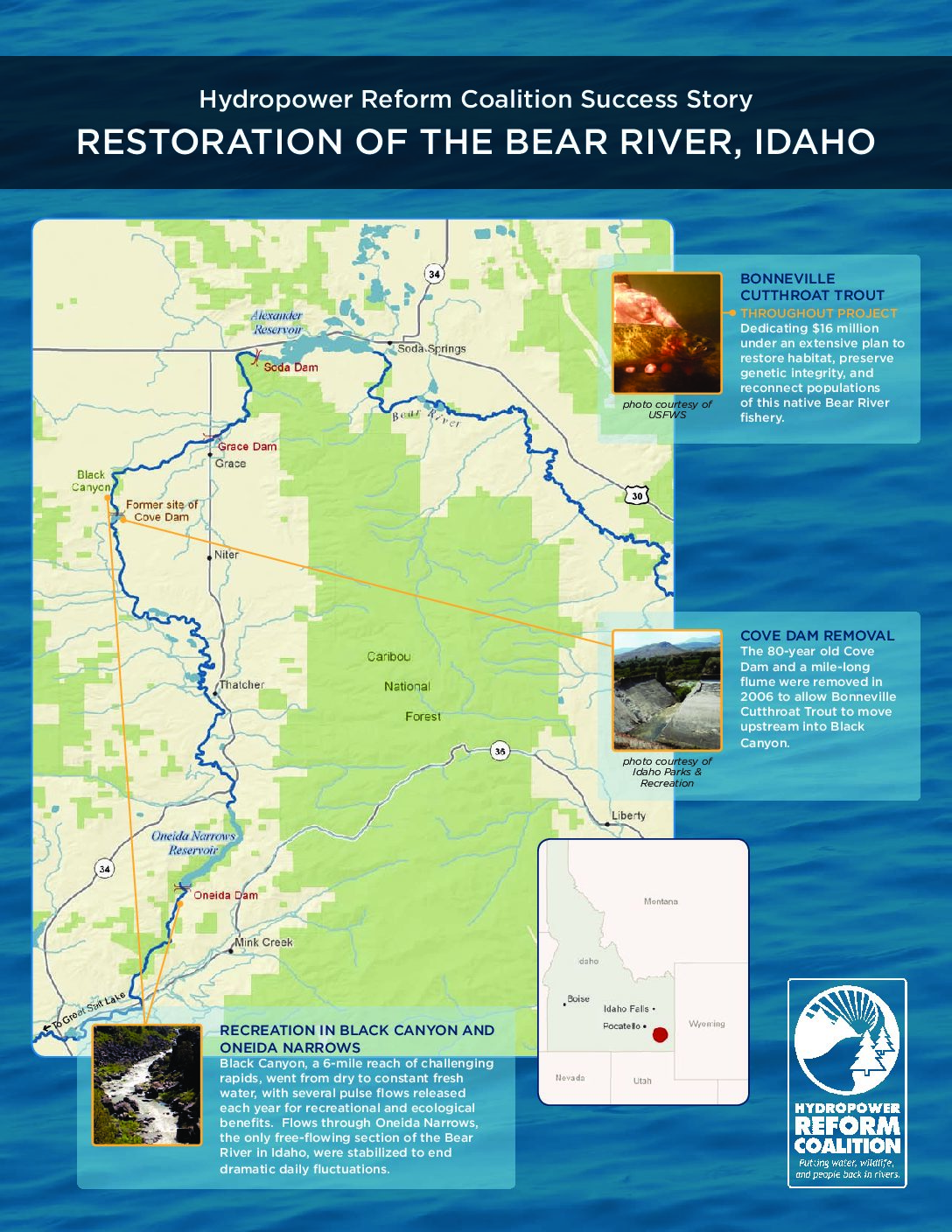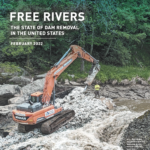The Bear River flows in a circular 500-mile path, crossing the Utah-Wyoming state line three times before flowing into Bear Lake in Idaho’s southeastern corner. From Bear Lake the river arcs west and turns back south, returning to Utah and ultimately flowing into the Great Salt Lake, less than 100 miles from its headwaters.
Along the way, the river is intensely regulated. Many dams, diversions, and pipes block and pull water from the Bear. In 1907, the United States government authorized construction of the Bear River hydroelectric project. Construction took place from 1909 to 1927.
As required by law, the power company, PacifiCorp, received hydropower operating licenses from the Federal Energy Regulatory Commission (FERC) for its four dams – Soda, Grace, Cove, and Oneida – built closely next to one another over 40 miles of the Bear River. This set of dams was grouped together under a single license and became known as the Bear River Project.
When PacifiCorp went to renew its license in 1999, the dams were operating with almost no environmental balance. Flows from Oneida Dam fluctuated wildly – from 250 to 3000 cubic feet per second – several times in one day. No minimum flows were required in miles of river, leaving bypassed sections of the Bear empty except for springs and accidental water from dam leakage and spillover.
Through the license renewal, a carefully balanced settlement was reached in 2002, which led to a new 30-year license granted in 2003. Under the settlement, the Bear River began its recovery. A new governing group, the Environmental Coordination Committee (ECC) was formed from settlement parties. Today, Coalition members continue to serve on the ECC in order to make smart decisions adaptively over the 30 years of the license.
Fishery resources, especially the native but severely depressed Bonneville cutthroat trout populations, were a prime target for rehabilitation. None of the dams offered any upstream passage, and with no minimum dam releases, fish crowded into areas with fresh springwater. Under the new Bear River license, extensive resources are dedicated for habitat restoration and population viability throughout the project reaches. Since 2003, the ECC has funded actions to support Bonneville cutthroat trout, such as restoring landscapes through purchasing riparian easements and managing sediment; enabling new passage on key tributaries like Cottonwood Creek; improving productive aquatic conditions by fencing livestock and redirecting flows at Kackley Springs; and sponsoring broodstock development programs at the Grace Fish Hatchery to preserve genetic integrity.


 HRC or member-contributed
HRC or member-contributed